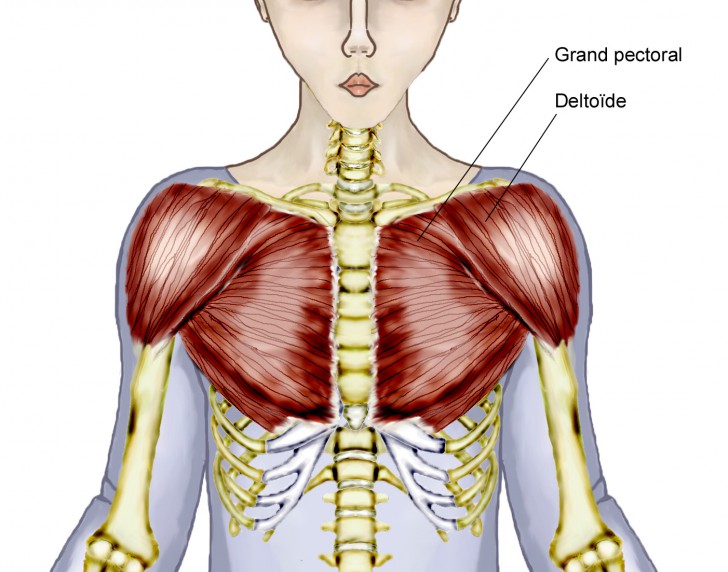The chest muscles are a group of muscles that make up the upper thoracic region, and they provide the shape that human chests have. There are multiple functions of these chest muscles. The primary function is certainly to provide support to the skeletal system and to facilitate its movements. The secondary function is to offer protection to the skeletal system and vital organs inside. The third function of chest muscles is to strengthen the upper part of the body which can facilitate enhanced mobility, flexibility and a wider range of motions.
Whether you are moving your arm or neck, getting up or sleeping, breathing or simply walking, you will be using one or more of your chest muscles. Unlike some other areas of the body, the chest muscles are much simpler and easier to understand.
There are three main chest muscles in the human body. They are pectoralis major, pectoralis minor and serratus anterior.
Pectoralis major
The pectoralis major is the biggest of all the chest muscles, as would be apparent from its nomenclature. This muscle resembles the shape of a hand fan or the blade of a pedestal fan. This muscle is large, heavy and strong. Most of your chest is formed and shaped by the pectoralis major muscle. There are two such muscles, on either side of the chest. It begins at the clavicle, sternum and ribs and stretches to the upper arm bone that connects the elbow to the shoulder, which is also known as humerus.
The pectoralis major muscles help you to move your shoulders, shoulder joints, to move or raise your arm and all motions of the upper arm. These muscles also facilitate breathing. The pectoralis major muscles are among the strongest in the human body.
Pectoralis minor
The pectoralis minor muscles are also located on either sides of the chest but are located underneath the larger pectoralis major muscles. The pectoralis minor muscles are relatively much thin in comparison with pectoralis major muscles. The pectoralis minor muscles are attached to the shoulder blade or scapula and they stretch down to the third, fourth and fifth rib. They are triangular in shape and have three independent stretches to the three ribs.
In that sense, you may refer to the pectoralis minor muscles as three muscles on either side of the chest which takes the total count to six muscles. The pectoralis minor muscles have limited function. They do offer protection but they primarily allow you to pull your shoulder down and forward.
Serratus anterior
The serratus anterior muscles are not always included in the anatomy of the chest and many don’t consider them to be one of the chest muscles. But since serratus anterior muscles stretch out to the pectorals on the ribs, it would be irrational to exclude them from the list of chest muscles. The serratus anterior muscles are located just beneath the underarms and attach to as many as nine ribs.
Again, these muscles are located on either side of the chest, beneath both the underarms. These muscles primarily allow you to move your scapula or shoulder blade.
